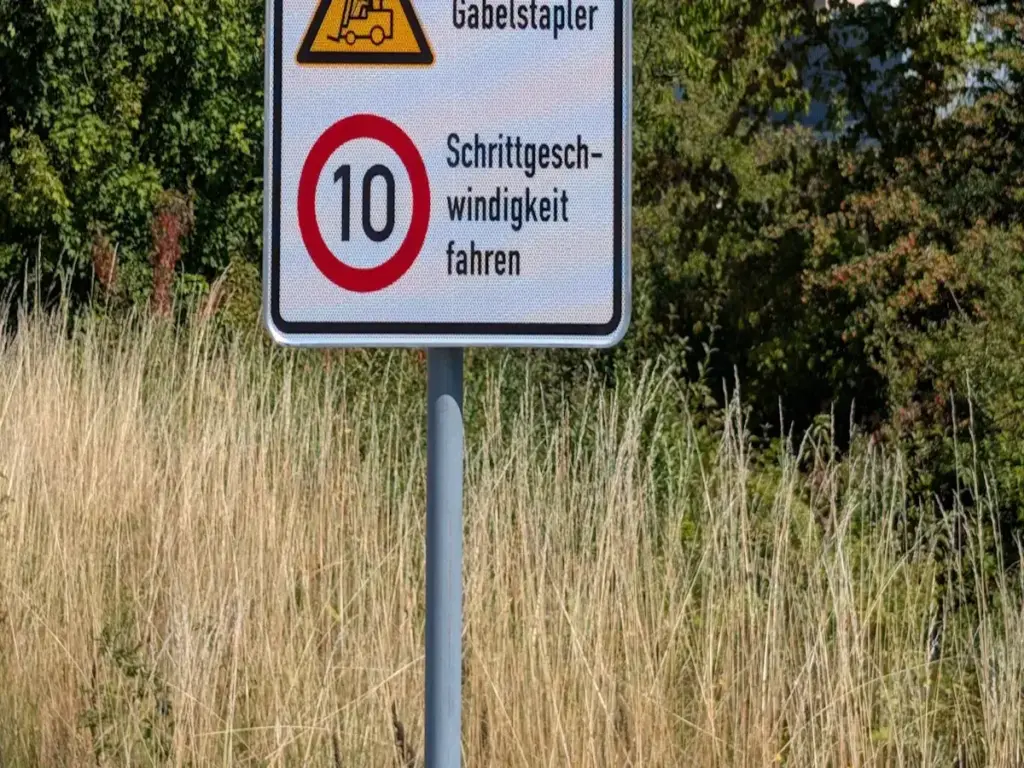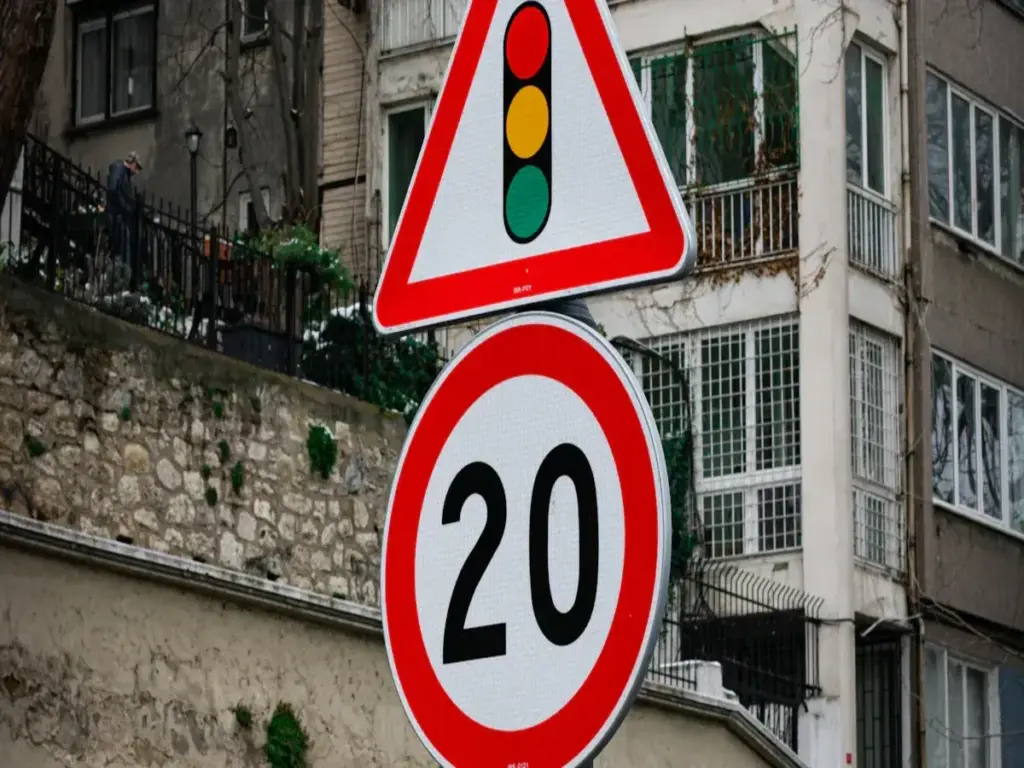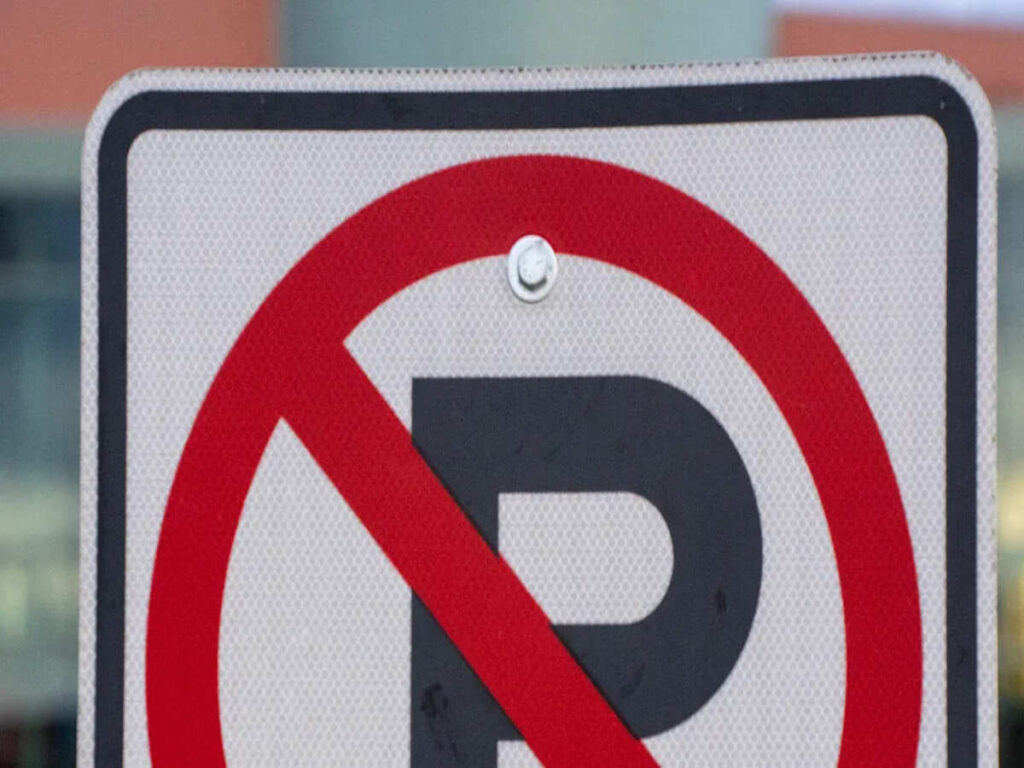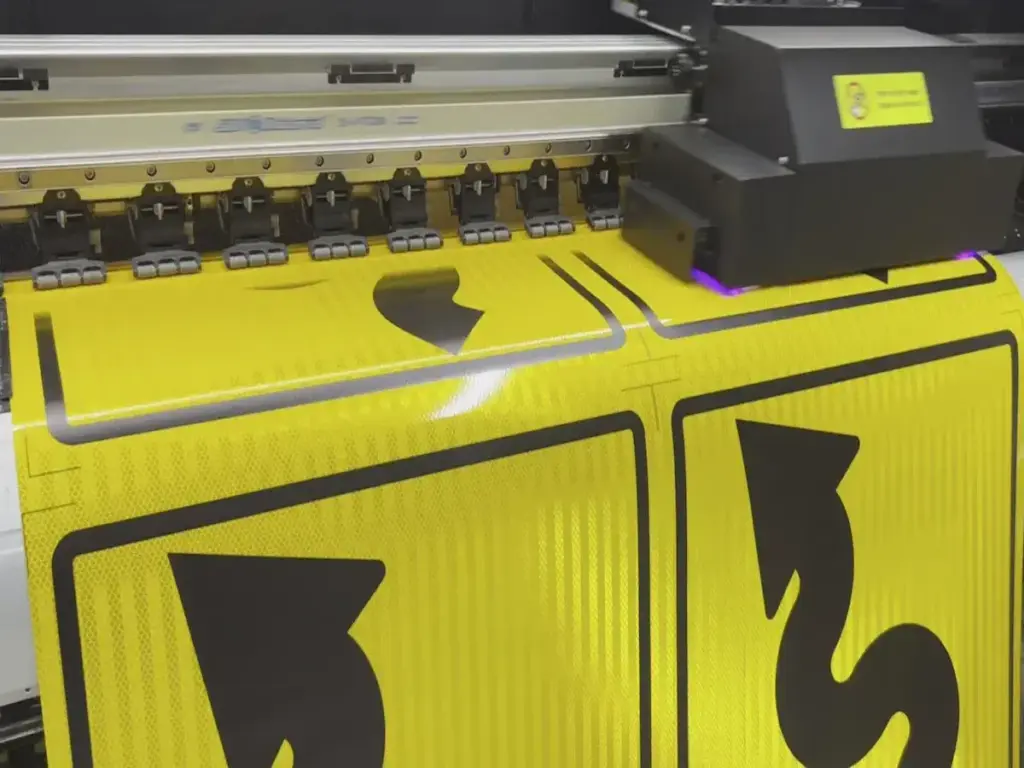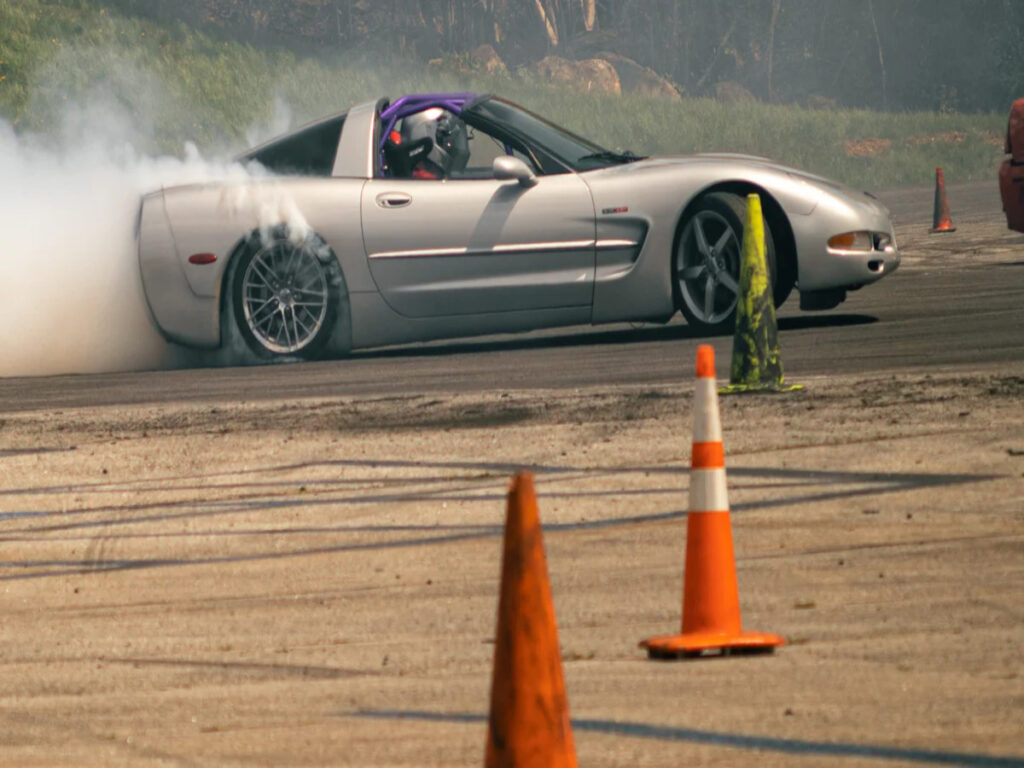
आप सोच सकते हैं कि छोटे ट्रैफ़िक शंकु से टकराना हानिरहित है, लेकिन परिणाम आपकी अपेक्षा से अधिक महत्वपूर्ण हो सकते हैं. ये सड़क शंकु, अक्सर पीवीसी या रबर जैसी लचीली सामग्री से बनाया जाता है, प्रभाव पर झुकने के लिए डिज़ाइन किया गया है, तत्काल क्षति को कम करना. तथापि, उनका वजन और डिज़ाइन अभी भी आपकी कार के पेंट पर खरोंच का कारण बन सकता है या अंडर कैरिज संबंधी समस्याएं पैदा कर सकता है, विशेषकर उच्च गति पर. यही कारण है कि उच्च-गुणवत्ता वाले ट्रैफ़िक शंकुओं का उपयोग करना महत्वपूर्ण है - न केवल आपके वाहन की सुरक्षा के लिए बल्कि समग्र सड़क सुरक्षा सुनिश्चित करने के लिए भी.
में निवेश करना बिक्री के लिए उच्च गुणवत्ता वाले यातायात शंकु बेहतर स्थायित्व और दृश्यता सुनिश्चित करता है, निम्न-गुणवत्ता वाले शंकुओं से टकराने से जुड़े जोखिमों को कम करना. ऑप्टट्रैफ़िक स्थायित्व और अधिकतम सुरक्षा के लिए डिज़ाइन किए गए प्रीमियम ट्रैफ़िक शंकुओं का चयन प्रदान करता है. क्या आपको निर्माण क्षेत्रों के लिए शंकु की आवश्यकता है, विशेष घटनाएं, या आवासीय क्षेत्र, OPTRAFFIC के शंकु लंबे समय तक चलने के लिए बनाए गए हैं, आपके वाहन और आपके आस-पास के लोगों दोनों के लिए उत्कृष्ट सुरक्षा प्रदान करना.
क्या एक छोटा ट्रैफिक कोन आपकी कार को नुकसान पहुंचा सकता है??
बाहरी क्षति (स्क्रैच, छात्रों, पेंट की खरोंचें)
एक छोटे ट्रैफ़िक शंकु से टकराना हानिरहित लग सकता है, लेकिन यह आपकी कार पर स्पष्ट निशान छोड़ सकता है. यातायात सुरक्षा शंकु की सामग्री, अक्सर पीवीसी या रबर, आपके पेंट पर खरोंच लग सकता है, घिसाव या खरोंच छोड़ना. यदि आप अधिक गति से गाड़ी चला रहे हैं, प्रभाव से छोटे-छोटे डेंट भी हो सकते हैं. ये निशान पहली नज़र में कोई बड़ी बात नहीं लग सकते, लेकिन समय के साथ, उनमें जंग लग सकती है या महंगी मरम्मत की आवश्यकता हो सकती है. आपको भीड़-भाड़ वाले इलाकों में इस स्थिति का सामना करना पड़ सकता है, जैसे पार्किंग स्थल या आयोजन स्थल, जहां शंकु का उपयोग यातायात को निर्देशित करने के लिए किया जाता है. अपनी बारी या पार्किंग स्थान का गलत आकलन करने से आसानी से ट्रैफिक शंकु के ऊपर से गुजर सकता है और आपकी कार पर अवांछित दाग लग सकते हैं।.
हवाई जहाज़ के पहिये के जोखिम (द्रव का रिसाव, संरेखण मुद्दे, ढीला भाग)
The हवाई जहाज के पहिये आपकी कार आपकी सोच से कहीं अधिक असुरक्षित है. जब आप ट्रैफिक शंकु से टकराते हैं, विशेषकर उच्च गति पर, यह आपके वाहन के नीचे फंस सकता है. इससे द्रव का रिसाव हो सकता है, आपके निकास तंत्र को नुकसान, या ढीले हिस्से भी. संरेखण मुद्दे एक और संभावित खतरा हैं, विशेष रूप से यदि शंकु आपकी कार के निलंबन को थोड़ा बदल देता है. निर्माण क्षेत्रों या टूटे-फूटे वाहनों के पास रखे गए शंकु अक्सर यह जोखिम पैदा करते हैं. अगर आप ध्यान नहीं दे रहे हैं, आपको खरोंच वाले बम्पर के अलावा और भी बहुत कुछ झेलना पड़ सकता है.
क्षति को प्रभावित करने वाले कारक (रफ़्तार, शंकु सामग्री, कार का प्रकार)
क्षति की सीमा कई कारकों पर निर्भर करती है. गति एक बड़ी भूमिका निभाती है - एक शंकु को मारना 10 मील प्रति घंटा की तुलना में कहीं कम जोखिम भरा है 50 मील प्रति घंटा. शंकु की सामग्री भी मायने रखती है. भारित आधार वाले भारी शंकु हल्के शंकुओं की तुलना में अधिक नुकसान पहुंचा सकते हैं. आपकी कार का डिज़ाइन एक अन्य कारक है. एक एसयूवी की तुलना में कम-निकासी वाले वाहन को अंडरकैरिज क्षति होने की अधिक संभावना है. ट्रैफ़िक शंकुओं का उपयोग अक्सर आवासीय क्षेत्रों में खेल क्षेत्रों को अवरुद्ध करने या इवेंट ट्रैफ़िक को निर्देशित करने के लिए किया जाता है. इन कारकों का ध्यान रखने से आप अपने वाहन को अनावश्यक क्षति से बचा सकते हैं.
निम्न-गुणवत्ता वाले ट्रैफ़िक कोन आपके जोखिम को क्यों बढ़ा सकते हैं?
जबकि ट्रैफिक कोन आपको सुरक्षित रखने के लिए डिज़ाइन किए गए हैं, निम्न-गुणवत्ता वाले शंकुओं को ड्राइवरों के लिए नोटिस करना कठिन हो सकता है, विशेष रूप से कम रोशनी की स्थिति या व्यस्त यातायात क्षेत्र. जब ट्रैफ़िक शंकु पर्याप्त परावर्तक न हों या बहुत हल्के हों, गति धीमी करने के समय वे ड्राइवर का ध्यान आकर्षित नहीं कर पाते, जिससे टकराव का खतरा अधिक है. स्पष्ट दृश्यता के बिना, ड्राइवरों के पास शंकु से टकराने से बचने के लिए पर्याप्त समय नहीं हो सकता है, जिससे वाहन और आसपास के क्षेत्र दोनों को नुकसान हुआ.
सुरक्षा के लिए सही ट्रैफिक कोन चुनना
यही कारण है कि उच्च-गुणवत्ता का चयन करना, टिकाऊ यातायात शंकु आवश्यक है. उच्च गुणवत्ता वाले सड़क शंकु न केवल परावर्तक पट्टियों के साथ बेहतर दृश्यता प्रदान करते हैं बल्कि यह भी सुनिश्चित करते हैं कि ड्राइवर उन्हें दूर से देख सकें और तदनुसार प्रतिक्रिया कर सकें।. गुणवत्तापूर्ण यातायात सुरक्षा शंकुओं में निवेश करके, आप दुर्घटनाओं और क्षति के जोखिम को कम करने में मदद करते हैं, अपने वाहन और अपने आस-पास के लोगों दोनों को सुरक्षित रखना.
बिक्री के लिए OPTRAFFIC ट्रैफिक कोन क्यों चुनें??
- बढ़ी हुई दृश्यता: चमकीला नारंगी रंग परावर्तक पट्टियों के साथ यह सुनिश्चित होता है कि ड्राइवर दूर से सड़क के शंकुओं को स्पष्ट रूप से देख सकें, गरीब प्रकाश में भी.
- टिकाऊ और जादा देर तक टिके: उच्च गुणवत्ता वाले पीवीसी और रबर से बना है, हमारे शंकु प्रभावों का सामना करने के लिए डिज़ाइन किए गए हैं, कठोर मौसम, और दीर्घकालिक उपयोग.
- किसी भी स्थिति के लिए आदर्श: चाहे आप किसी कार्यक्रम में यातायात का मार्गदर्शन कर रहे हों या निर्माण क्षेत्र स्थापित कर रहे हों, हमारे शंकु आपको आवश्यक स्थायित्व और विश्वसनीयता प्रदान करते हैं.
- थोक छूट: में आदेश थोक छूट के लिए, यह सुनिश्चित करना कि आपके पास बड़ी परियोजनाओं या चल रही जरूरतों के लिए पर्याप्त शंकु हैं.
ट्रैफ़िक शंकु से टकराने के कानूनी और सुरक्षा परिणाम
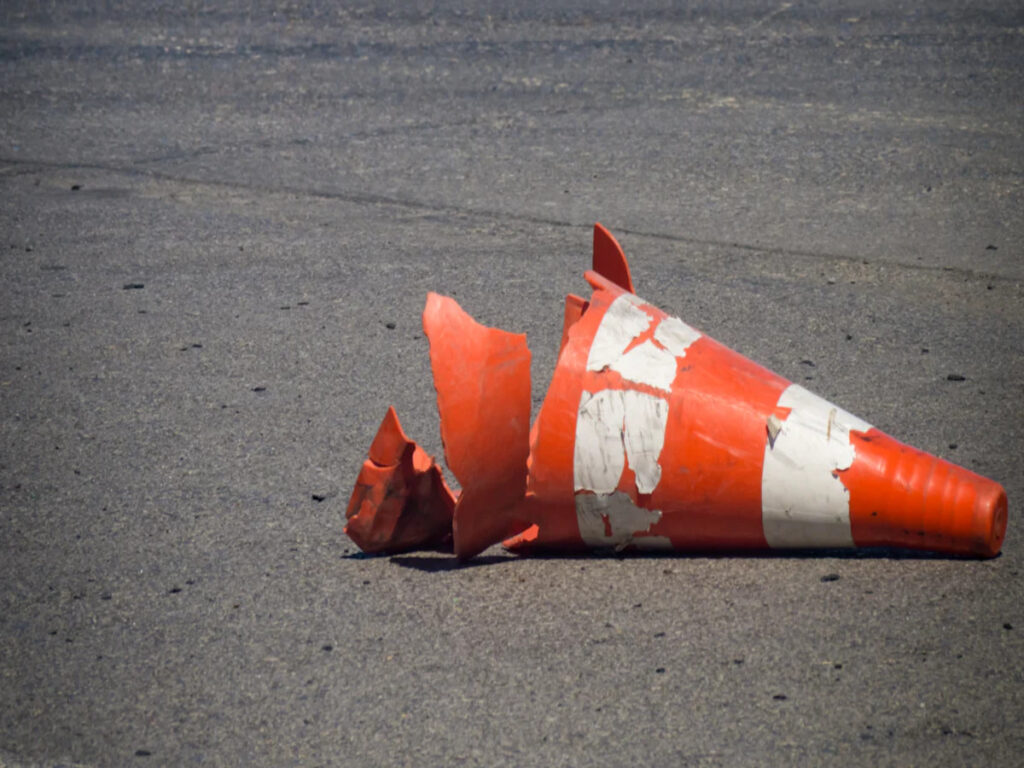
यातायात नियंत्रण उपकरणों को नुकसान पहुँचाने पर जुर्माना या जुर्माना
ट्रैफ़िक शंकुओं पर प्रहार एक छोटी सी गलती की तरह लग सकता है, लेकिन इसके गंभीर कानूनी परिणाम हो सकते हैं. कई स्थानीय और राष्ट्रीय यातायात कानूनों के अनुसार, यातायात शंकुओं को आधिकारिक यातायात नियंत्रण उपकरणों के रूप में वर्गीकृत किया गया है. ट्रैफिक कोन को नुकसान पहुंचाने पर जुर्माना या सजा हो सकती है, आपके स्थान के आधार पर. उदाहरण के लिए, संयुक्त राज्य अमेरिका में, यातायात नियंत्रण उपकरण, यातायात शंकु सहित, द्वारा विनियमित होते हैं समान यातायात नियंत्रण उपकरणों पर मैनुअल (MUTCD), जो निर्दिष्ट करता है कि सभी यातायात नियंत्रण उपकरण यातायात के सुरक्षित और कुशल संचालन के लिए आवश्यक हैं. इन उपकरणों के साथ छेड़छाड़ या क्षति पहुँचाने से उल्लंघन हो सकता है शीर्षक 23 यू.एस.. कोड, जो यातायात नियमों और यातायात नियंत्रण में बाधा के लिए दंड को संबोधित करता है.
कुछ न्यायक्षेत्रों में, किसी निर्माण क्षेत्र में यातायात शंकु के ऊपर से गाड़ी चलाने से यातायात नियमों का उल्लंघन हो सकता है, लापरवाही से गाड़ी चलाने के लिए दंड का प्रावधान या खतरे में डालने वाला प्रकाशनमैंसी सुरक्षा. के अनुसार राष्ट्रीय राजमार्ग यातायात सुरक्ष संचालन (NHTSA), निर्माण क्षेत्रों में यातायात नियंत्रण उपकरणों के क्षतिग्रस्त होने से दुर्घटनाओं का खतरा बढ़ सकता है, जिससे चोट लग सकती है या मृत्यु हो सकती है. यही कारण है कि ऐसे उल्लंघनों को गंभीरता से लिया जाता है. उदाहरण के लिए, में कैलिफोर्निया, ए वाहन कोड अनुभाग 21460 यदि कोई ड्राइवर किसी निर्माण क्षेत्र में यातायात नियंत्रण उपकरणों को नुकसान पहुँचाता है तो उल्लंघन हो सकता है, तक का जुर्माना होगा $1,000 या अधिक.
अन्य ड्राइवरों और पैदल चलने वालों के लिए सुरक्षा जोखिम
ट्रैफ़िक शंकु से टकराने से न केवल आप प्रभावित होते हैं बल्कि यह सड़क पर दूसरों के लिए सुरक्षा ख़तरा भी पैदा करता है. विस्थापित शंकु ड्राइवरों को भ्रमित कर सकते हैं, विशेष रूप से खराब रोशनी या उच्च यातायात वाले क्षेत्रों में. यह भ्रम दुर्घटनाओं या दुर्घटनाओं का कारण बन सकता है क्योंकि ड्राइवरों को अस्पष्ट सड़क स्थितियों से निपटने के लिए संघर्ष करना पड़ता है, विशेष रूप से निर्माण क्षेत्रों या अस्थायी यातायात परिवर्तन में. ट्रैफ़िक शंकुओं की उच्च-दृश्यता प्रकृति उन्हें ड्राइवरों को चेतावनी देने और संभावित खतरनाक क्षेत्रों के माध्यम से उनका मार्गदर्शन करने के लिए आवश्यक बनाती है.
ट्रैफिक कोन के रूप में भी काम करते हैं बाधाएं निर्माण क्षेत्र में, जहां श्रमिक और पैदल यात्री यातायात के प्रति संवेदनशील होते हैं. जब आप ट्रैफिक शंकु से टकराते हैं, आप अपने वाहन को उन क्षेत्रों में धकेलने का जोखिम उठाते हैं जो लोगों की सुरक्षा के लिए हैं, जैसे पैदल यात्री पथ या निर्माण क्षेत्र. इससे पैदल यात्रियों या श्रमिकों को गंभीर चोट लगने की संभावना बढ़ जाती है. द्वारा सुरक्षा अध्ययन के अनुसार व्यावसायिक सुरक्षा और स्वास्थ्य के लिए राष्ट्रीय संस्थान (एनआईओएसएच), खराब चिह्नित निर्माण क्षेत्र यातायात से संबंधित श्रमिकों की चोटों के एक महत्वपूर्ण हिस्से के लिए जिम्मेदार हैं. दृश्यता बनाए रखने के लिए परावर्तक यातायात शंकु आवश्यक हैं, ऐसी घटनाओं के जोखिम को कम करना.
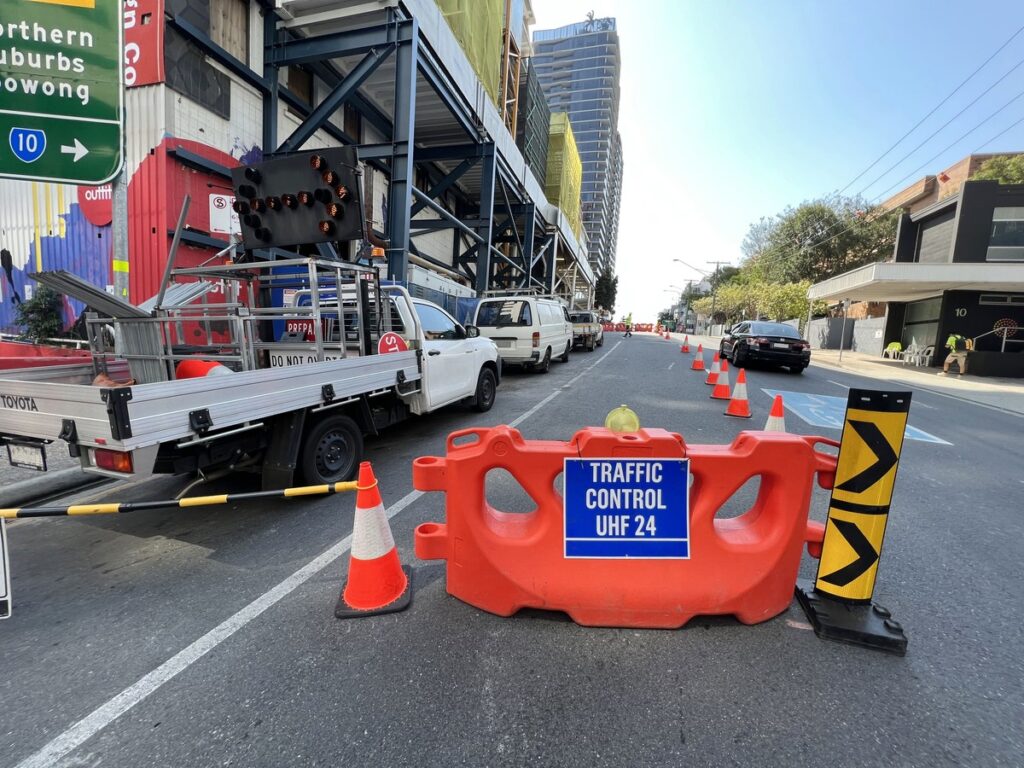
द्वितीयक दुर्घटनाओं से उत्तरदायित्व संबंधी चिंताएँ
ट्रैफ़िक शंकु से टकराने का प्रभाव तत्काल क्षति से कहीं अधिक हो सकता है. कई मामलों में, ऐसी घटनाएं ट्रिगर हो सकती हैं द्वितीयक दुर्घटनाएँ, जिसके परिणामस्वरूप होने वाली किसी भी क्षति या चोट के लिए आप उत्तरदायी हो सकते हैं. विस्थापित यातायात शंकु लेन को बाधित कर सकता है या ड्राइवरों को भ्रमित कर सकता है, विशेष रूप से खराब रोशनी या उच्च यातायात वाले क्षेत्रों में. शंकु से बचने के प्रयास में, कोई अन्य ड्राइवर अप्रत्याशित रूप से गाड़ी मोड़ सकता है, दुर्घटना की ओर ले जा रहा है.
उदाहरण के लिए, the राष्ट्रीय राजमार्ग यातायात सुरक्ष संचालन (NHTSA), इसके माध्यम से 100-कार नेचुरलिस्टिक ड्राइविंग अध्ययन, दिखाया गया है कि द्वितीयक दुर्घटनाएँ अक्सर प्रारंभिक टकरावों या व्यवधानों के परिणामस्वरूप होती हैं. कई मामलों में, मूल दुर्घटना के कारण यातायात की स्थिति में होने वाले बदलावों पर ड्राइवर ठीक से प्रतिक्रिया करने में विफल हो सकते हैं, जैसे यातायात कतार में वाहनों की गति धीमी करना या रुकना. द्वितीयक दुर्घटनाएँ विशेष रूप से निर्माण क्षेत्रों में प्रचलित हैं, जहां प्रारंभिक दुर्घटना के बाद अक्सर यातायात धीमा कर दिया जाता है या रोक दिया जाता है, आगे टकराव का खतरा बढ़ रहा है.
एनएचटीएसए का शोध द्वितीयक दुर्घटनाओं में योगदान देने वाले कई कारकों पर प्रकाश डालता है, शामिल ड्राइवर का ध्यान भटकाना, दुर्घटना के बाद बढ़ी हुई गति, और यातायात संकुलन. उदाहरण के लिए, किसी दुर्घटना या यातायात शंकु के विस्थापन के बाद, ड्राइवर अपने ड्राइविंग व्यवहार को समायोजित करने में विफल हो सकते हैं, जिससे और भी दुर्घटनाएँ हो रही हैं. ऐसी द्वितीयक टक्करों के परिणामस्वरूप वाहन क्षति हो सकती है, चोट लगने की घटनाएं, और यहां तक कि घातक, प्रारंभिक घटना को और अधिक महंगा बनाना.
ट्रैफ़िक शंकु से टकराने के व्यापक निहितार्थ
यातायात शंकु महत्वपूर्ण सुरक्षा उपकरण के रूप में
सड़कों को सुरक्षित रखने में ट्रैफिक कोन महत्वपूर्ण भूमिका निभाते हैं. उनके उज्ज्वल नारंगी रंग और चिंतनशील स्ट्रिप्स उन्हें अत्यधिक दिखाई देते हैं, यहां तक कि कम रोशनी की स्थिति या खराब मौसम में भी. आपने संभवतः उन्हें निर्माण क्षेत्रों को चिह्नित करते हुए देखा होगा, दुर्घटनाओं के आसपास यातायात का मार्गदर्शन करना, या अस्थायी पैदल यात्री पथ बनाना. ये शंकु केवल यादृच्छिक वस्तुएं नहीं हैं - वे आपको गड्ढों जैसे खतरों के बारे में चेतावनी देकर एक स्पष्ट उद्देश्य पूरा करते हैं, तेज मोड़, या सड़क बंद है. यातायात को निर्देशित करके और लेनों को विभाजित करके, वे दुर्घटनाओं को रोकते हैं और ड्राइवरों और श्रमिकों दोनों की सुरक्षा करते हैं. उन्हें सड़क सुरक्षा के मूक संरक्षक के रूप में सोचें, यह सुनिश्चित करना कि हर कोई अनावश्यक जोखिम के बिना अपने गंतव्य तक पहुंचे.
ऑप्टट्रैफ़िक की एक विस्तृत श्रृंखला की पेशकश करने पर गर्व है बिक्री के लिए यातायात शंकु अधिकतम दृश्यता और स्थायित्व के लिए डिज़ाइन किया गया. चाहे आप किसी व्यस्त निर्माण स्थल का प्रबंधन कर रहे हों या आपातकालीन क्षेत्र में ड्राइवरों की सुरक्षा सुनिश्चित कर रहे हों, ऑप्टट्रैफ़िक‘ यातायात सुरक्षा उत्पादों को सड़क सुरक्षा के उच्चतम मानकों को पूरा करने के लिए इंजीनियर किया जाता है.
शंकुओं को हिलाने या क्षतिग्रस्त करने से उत्पन्न व्यवधान
जब यातायात शंकु हट जाते हैं या क्षतिग्रस्त हो जाते हैं, अराजकता का पालन हो सकता है. ड्राइवर सुरक्षित रूप से नेविगेट करने के लिए इन ट्रैफ़िक शंकुओं पर भरोसा करते हैं, इसलिए उनकी अनुपस्थिति से भ्रम की स्थिति पैदा हो सकती है, मंदी, या यहाँ तक कि दुर्घटनाएँ भी. एक ट्रैफिक शंकु के ऊपर से दौड़ने और उसे सड़क के बीच में छोड़ने की कल्पना करें. अन्य ड्राइवर इससे बचने के लिए गाड़ी मोड़ सकते हैं, सभी के लिए सुरक्षा संबंधी खतरे पैदा करना. क्षतिग्रस्त शंकु अपनी सुरक्षात्मक बाधाओं को हटाकर सड़क कर्मियों को भी खतरे में डाल सकते हैं. ये व्यवधान न केवल यातायात प्रवाह को प्रभावित करते हैं बल्कि ये जीवन को भी ख़तरे में डालते हैं. शंकुओं के साथ सम्मानपूर्वक व्यवहार करने से व्यवस्था बनाए रखने में मदद मिलती है और सभी सुरक्षित रहते हैं.
यातायात नियंत्रण उपायों का सम्मान करने का महत्व
ट्रैफ़िक शंकुओं को नज़रअंदाज करने के गंभीर परिणाम हो सकते हैं. आपको प्रतिक्रिया करने और गलतियों से बचने के लिए समय देने के लिए उन्हें रणनीतिक रूप से रखा गया है. उदाहरण के लिए, स्कूल क्षेत्रों में शंकु आपको चौराहों और उन क्षेत्रों के प्रति सचेत करते हैं जहां बच्चे मौजूद हो सकते हैं. आपात्कालीन स्थिति में, ढहने योग्य यातायात शंकु फंसे हुए वाहनों के बारे में अन्य ड्राइवरों को तुरंत चेतावनी दे सकता है, दुर्घटनाओं की संभावना को कम करना. इन उपायों की अनदेखी करने से न केवल आपकी कार को नुकसान होने का खतरा बढ़ जाता है बल्कि दूसरों को भी खतरा होता है. यातायात शंकुओं का सम्मान करके, आप सभी के लिए एक सुरक्षित और अधिक संगठित वातावरण में योगदान करते हैं.
याद करना: ट्रैफ़िक शंकु केवल बाधाएं नहीं हैं - वे सुरक्षा और व्यवस्था के लिए आवश्यक उपकरण हैं. अनावश्यक जोखिमों और व्यवधानों से बचने के लिए उनके साथ सावधानी से व्यवहार करें.
एक छोटे ट्रैफ़िक शंकु को छूना मामूली लग सकता है, लेकिन इससे महंगी मरम्मत हो सकती है, कानूनी परेशानी, और सुरक्षा जोखिम. यातायात शंकु खतरों को चिह्नित करके सड़क सुरक्षा में महत्वपूर्ण भूमिका निभाते हैं, मार्गदर्शक यातायात, और श्रमिकों की रक्षा करना. सतर्क रहो, छोटे यातायात शंकुओं का सम्मान करें, और सड़क पर खुद को और दूसरों को सुरक्षित रखने के लिए स्थानीय नियमों का पालन करें.
एक विश्वसनीय ट्रैफ़िक शंकु निर्माता के रूप में, OPTRAFFIC प्रीमियम ऑफर करता है, लंबे समय तक चलने वाले शंकु जो निर्माण क्षेत्रों और सड़कों पर सुरक्षा बढ़ाते हैं. यह सुनिश्चित करने के लिए कि आपकी साइट या प्रोजेक्ट इष्टतम सुरक्षा के लिए पूरी तरह से सुसज्जित है, हमारी परावर्तक शंकुओं की श्रृंखला का अन्वेषण करें. प्रतीक्षा न करें—अपनी आवश्यकताओं के लिए सर्वोत्तम ट्रैफ़िक शंकु खरीदने और ड्राइवरों और श्रमिकों दोनों की सुरक्षा सुनिश्चित करने के लिए आज ही OPTRAFFIC पर जाएँ।!
अक्सर पूछे जाने वाले प्रश्न
क्या आप ट्रैफिक कोन से टकराने के कारण मुसीबत में पड़ सकते हैं??
ट्रैफ़िक शंकु से टकराने पर कानूनी परिणाम हो सकते हैं, विशेषकर यदि यह किसी द्वितीयक दुर्घटना का कारण बनता है. यातायात शंकु आवश्यक यातायात नियंत्रण उपकरण हैं, और उन्हें नुकसान पहुंचाने या हिलाने से यातायात प्रवाह बाधित हो सकता है. यदि आपके कार्यों के कारण दुर्घटना होती है या यातायात प्रबंधन में बाधा आती है तो स्थानीय यातायात कानून जुर्माना या जुर्माना लगा सकते हैं. निर्माण क्षेत्र में, श्रमिकों और पैदल चलने वालों के लिए बढ़ते जोखिम के कारण शंकु को विस्थापित करने से अधिक गंभीर कानूनी परिणाम हो सकते हैं.
ट्रैफिक कोन चुराने पर क्या जुर्माना है??
ट्रैफिक कोन चोरी करना कई क्षेत्रों में इसे सरकारी या सार्वजनिक संपत्ति की चोरी माना जाता है. अमेरिका में।, उदाहरण के लिए, ट्रैफ़िक शंकु चुराने पर क्षेत्राधिकार के आधार पर जुर्माना या आपराधिक आरोप लग सकते हैं. यदि चोरी के कारण यातायात प्रवाह में बाधा उत्पन्न होती है या सार्वजनिक सुरक्षा को खतरा होता है, तो जुर्माना मामूली जुर्माने से लेकर अधिक गंभीर आरोपों तक भिन्न हो सकता है. राज्य के कानून या स्थानीय अध्यादेश आम तौर पर यातायात नियंत्रण उपकरणों को हटाने या चोरी करने के परिणामों की रूपरेखा तैयार करते हैं.
क्या बीमा शंकु से टकराने को कवर करता है??
ज्यादातर मामलों में, ऑटो बीमा ट्रैफ़िक शंकु से टकराने से होने वाले नुकसान को कवर करता है, लेकिन यह आपकी नीति पर निर्भर करता है. व्यापक या टकराव बीमा आम तौर पर मरम्मत के लिए भुगतान करता है यदि आपका वाहन शंकु के साथ टकराव में क्षतिग्रस्त हो जाता है. तथापि, यदि आपके कार्यों के कारण आगे दुर्घटनाएँ या चोटें आती हैं, आप नुकसान के लिए आर्थिक रूप से उत्तरदायी हो सकते हैं. कोन जैसे यातायात नियंत्रण उपकरणों से जुड़ी दुर्घटनाओं के लिए कवरेज और बहिष्करण को समझने के लिए हमेशा अपनी बीमा पॉलिसी की समीक्षा करें.
ट्रैफ़िक कोन के लिए मानक आवश्यकताएँ क्या हैं??
ट्रैफ़िक शंकुओं को विशिष्ट आवश्यकताओं को पूरा करना चाहिए ताकि यह सुनिश्चित हो सके कि वे ट्रैफ़िक को प्रभावी ढंग से प्रबंधित करते हैं और पर्याप्त सुरक्षा प्रदान करते हैं. के अनुसार समान यातायात नियंत्रण उपकरणों पर मैनुअल (MUTCD), मानक यातायात शंकु आमतौर पर टिकाऊ से बने होते हैं, उच्च दृश्यता सामग्री, जैसे पीवीसी या रबर, और कम रोशनी में दृश्यता के लिए परावर्तक धारियों की सुविधा है. MUTCD दिशानिर्देश उनकी ऊंचाई निर्धारित करते हैं, रंग (आमतौर पर नारंगी), और यह सुनिश्चित करने के लिए परावर्तक क्षमताएं कि वे दूर से दिखाई दें, यहां तक कि कोहरे या अंधेरे परिस्थितियों में भी. ट्रैफ़िक शंकुओं को आधार पर भी भारित किया जाना चाहिए ताकि उन्हें हवा या वाहन के प्रभाव से आसानी से गिरने से बचाया जा सके.
मैं यह कैसे सुनिश्चित करूँ कि द्वितीयक दुर्घटनाओं से बचने के लिए मेरा निर्माण क्षेत्र ठीक से स्थापित है?
आपके निर्माण क्षेत्र में द्वितीयक दुर्घटनाओं के जोखिम को कम करने के लिए, सुनिश्चित करें कि आप उपयोग करें टिकाऊ, चिंतनशील यातायात शंकु जो रात में या ख़राब मौसम में भी अत्यधिक दिखाई देते हैं. सुनिश्चित करें कि शंकु स्पष्ट स्थान पर रखे गए हैं, रणनीतिक स्थान और उचित सेटअप के लिए MUTCD दिशानिर्देशों का पालन करें. यातायात सुरक्षा शंकुओं को जगह पर रखने से भ्रम से बचने में मदद मिलती है, वाहन टकराव की संभावना कम हो जाती है, और श्रमिकों और पैदल यात्रियों की सुरक्षा करता है.
बिक्री के लिए OPTRAFFIC के ट्रैफ़िक शंकु द्वितीयक टकरावों को रोकने में कैसे मदद कर सकते हैं?
OPTRAFFIC के उच्च-गुणवत्ता वाले ट्रैफ़िक शंकु इसमें परावर्तक पट्टियाँ और चमकीले नारंगी रंग हैं, कम रोशनी या खतरनाक स्थितियों में दृश्यता सुनिश्चित करना. ये नारंगी शंकु निर्माण क्षेत्रों जैसे खतरनाक क्षेत्रों को स्पष्ट रूप से चिह्नित करके माध्यमिक टकराव के जोखिम को कम करने में मदद करते हैं, रोड क्लोजर, और detours. कठोर परिस्थितियों को सहने के लिए निर्मित, हमारे सुरक्षा शंकु प्रभावी मार्गदर्शन प्रदान करते हैं, दोनों ड्राइवरों और श्रमिकों को सुरक्षित रखना.

